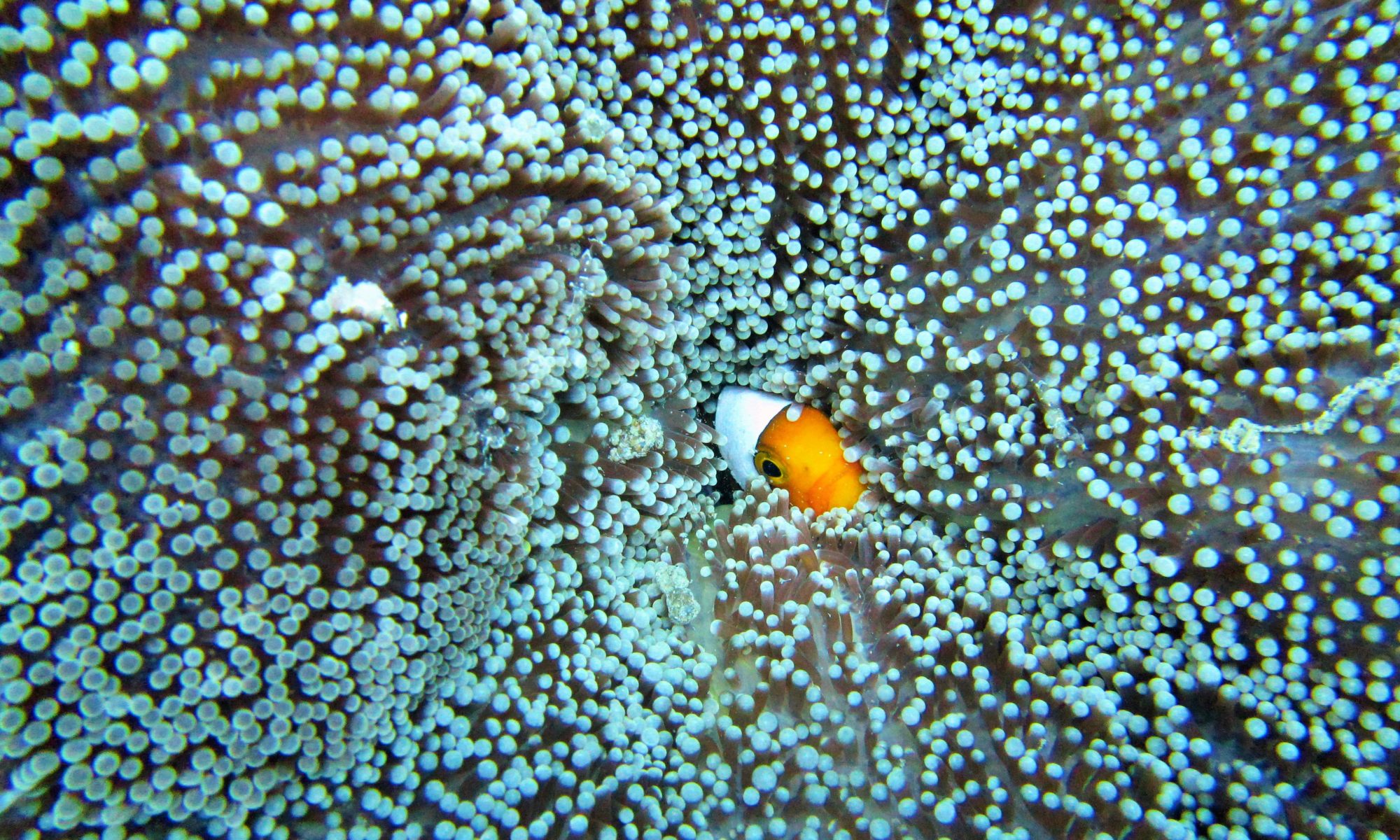Once again, the time has come for the annual Eco Evo photo competition! The third instalment of the competition saw some wonderful submissions from across the School of Natural Sciences, and the top spot was fiercely contested. Due to their desire to participate, the editors stepped away from the judging process and the shortlisting was conducted by an unbiased third-party and the photos were anonymised. Finally, the vote for the winning photo was put to the Trinity School of Natural Science, again the photos were anonymised.
Read on to see the full gallery of submissions and to find out which photo was chosen as the winner.
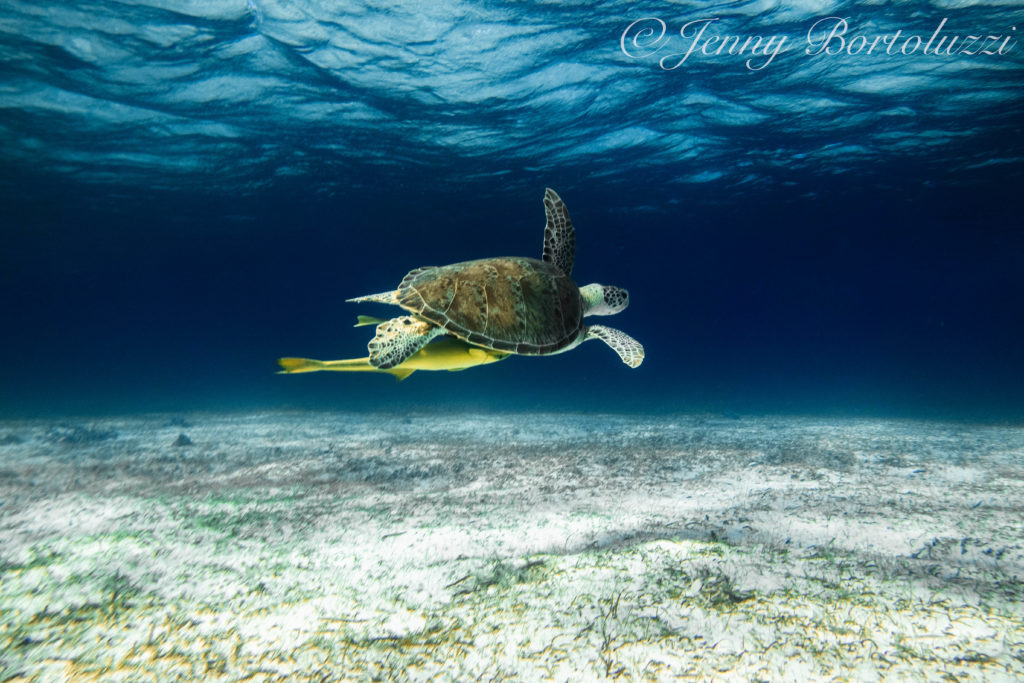
A Green turtle swims away with its trusty remora after feeding on seagrass in the Bahamas. Remoras and turtles enjoy a symbiotic relationship as the fish removes parasites and keeps the shell clean while receiving benefits in the form of food, transport and protection.
Jenny Bortoluzzi is a PhD student in Dr Andrew Jackson’s lab. She studies the spatial and foraging ecology of marine predators with a particular focus, and passion, for sharks and their relatives.
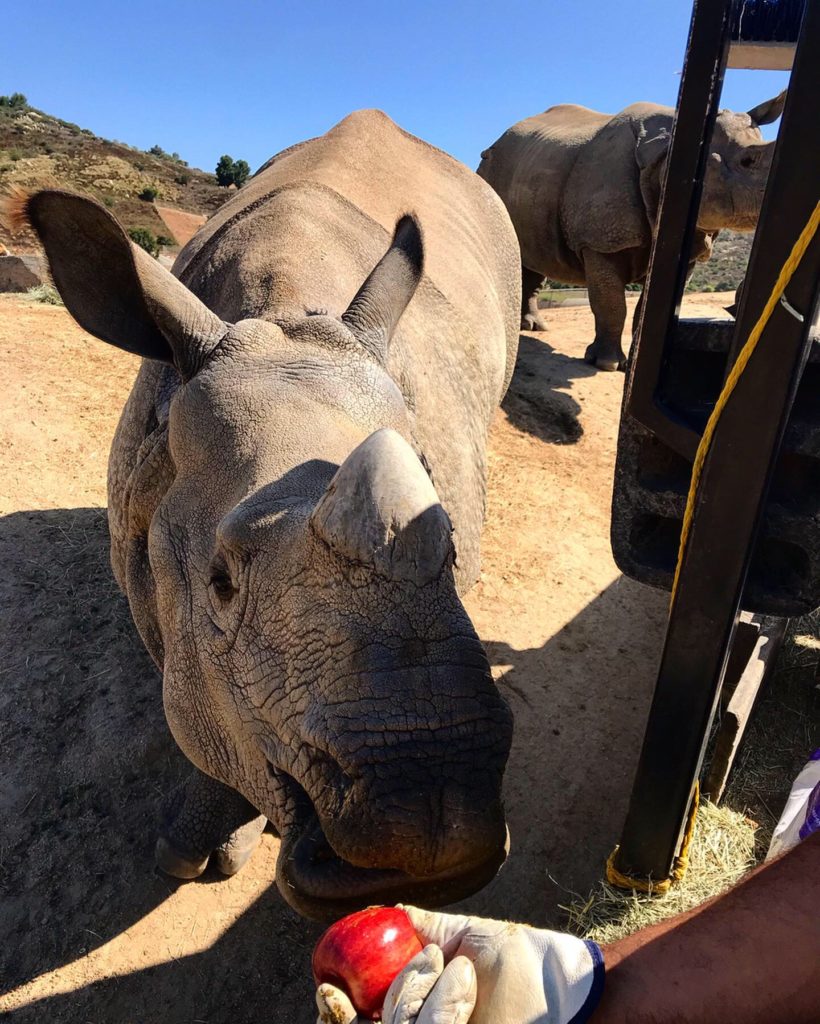
Indian Rhinos eating apples at the San Diego Zoo Safari Park (May 2019). These rhinos are part of the Indian Rhino Species Survival Plan, a managed breeding program operated by the Association of Zoos and Aquariums in the United States to help ensure demographic and genetic sustainability of this species ex situ.
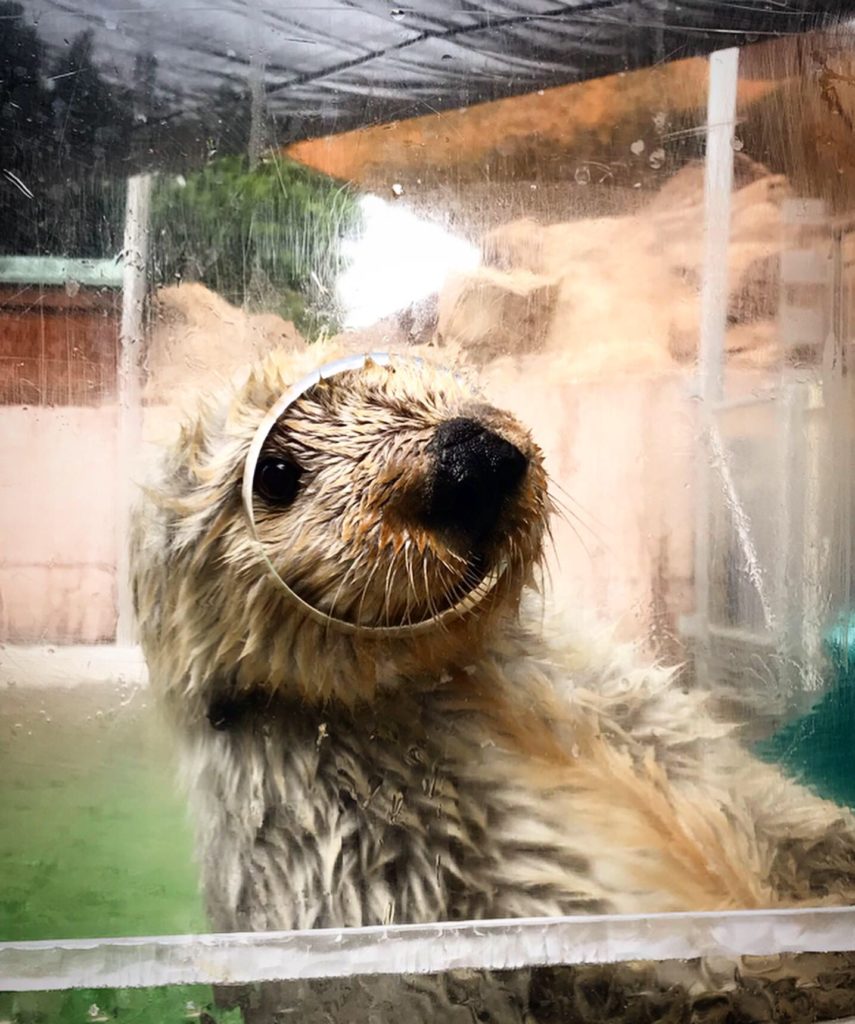
A Southern Sea Otter at SeaWorld San Diego (May 2019). SeaWorld is one of the very few rescue and rehabilitation facilities for injured and/or orphaned Sea Otters along California’s coast.
Andrew Mooney is a PhD student in Prof. Yvonne Buckley’s lab. His research focuses on the role of zoos and aquariums in global wildlife conservation through the use of global databases.
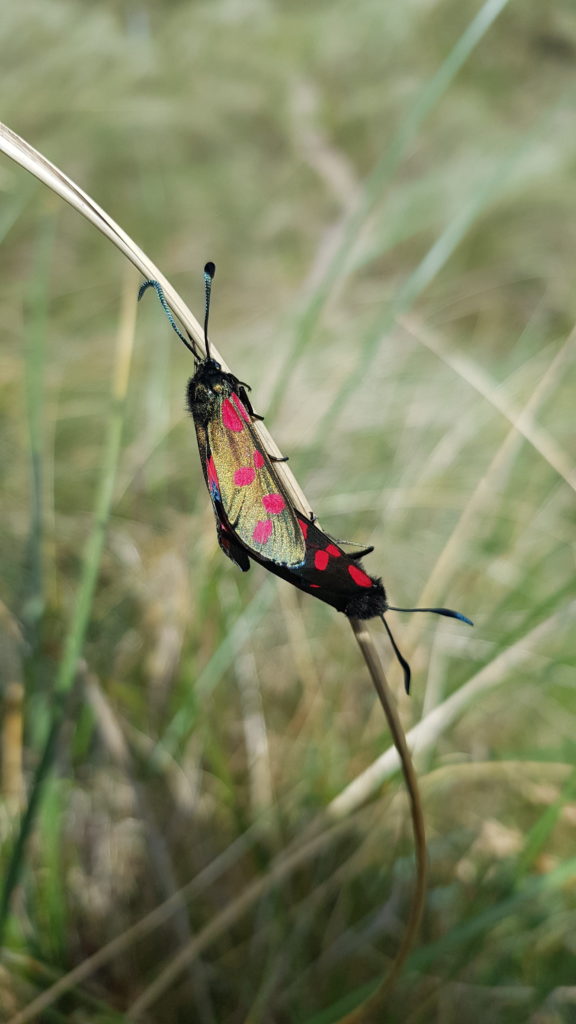
Six-spot Burnet (Zygaena filipendulae) mating on Banna Strand dunes, Kerry.
Dr Aoibheann Gaughrann is a postdoctoral researcher in the Behavioural and Evolutionary Ecology Research Group.
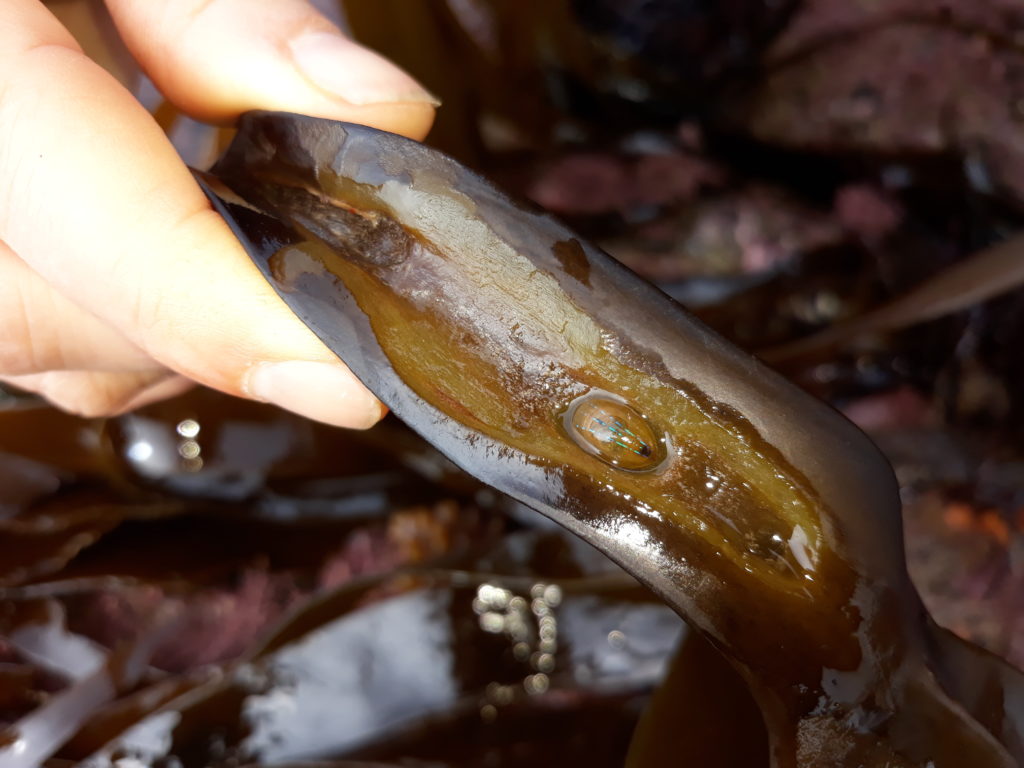
A Blue Rayed Limpet (Patella pellucida) rasps its way through a kelp stipe, leaving behind distinct feeding marks and pits. This grazer is one of the few local species feeding on live kelp, forming an as pretty as pivotal part of this herbivore-macroalgae relationship.
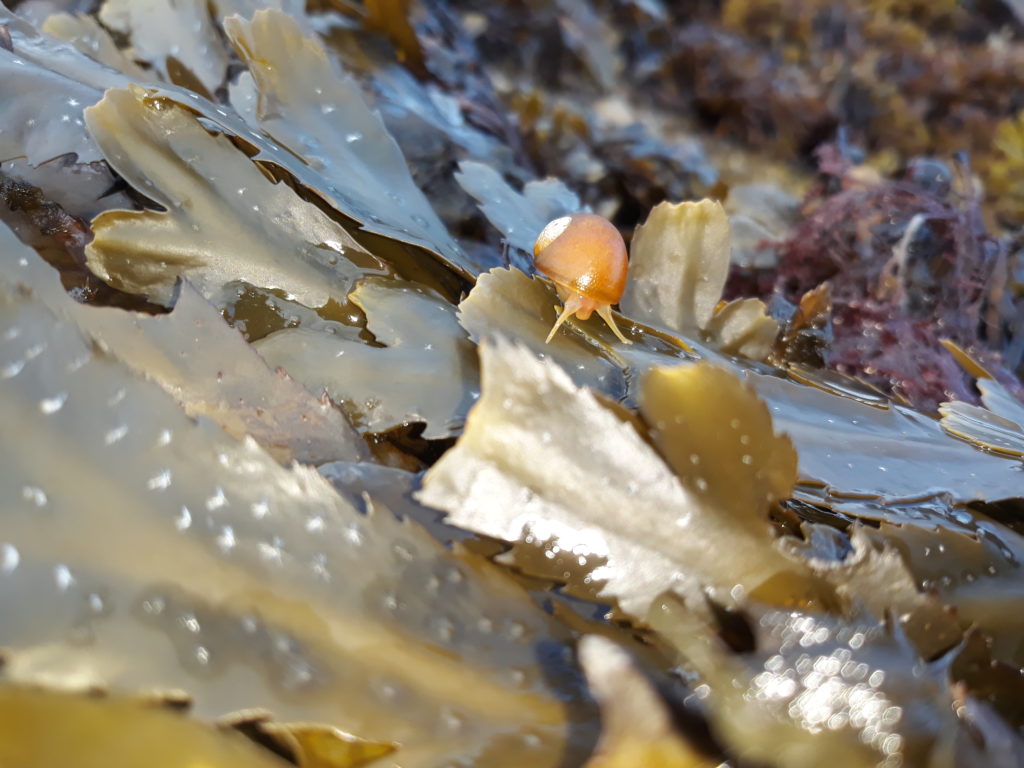
A Smooth (or Flat) Periwinkle (Littorina obtusata) happily munches away on Serrated Wrack (Fucus serratus). These little, colourful gastropods contribute strongly to literally feeding intertidal macroalgae into the trophic system at Irish rocky shores.
Katrin Schertenleib is a PhD student in Dr Nessa O’Connor’s lab.
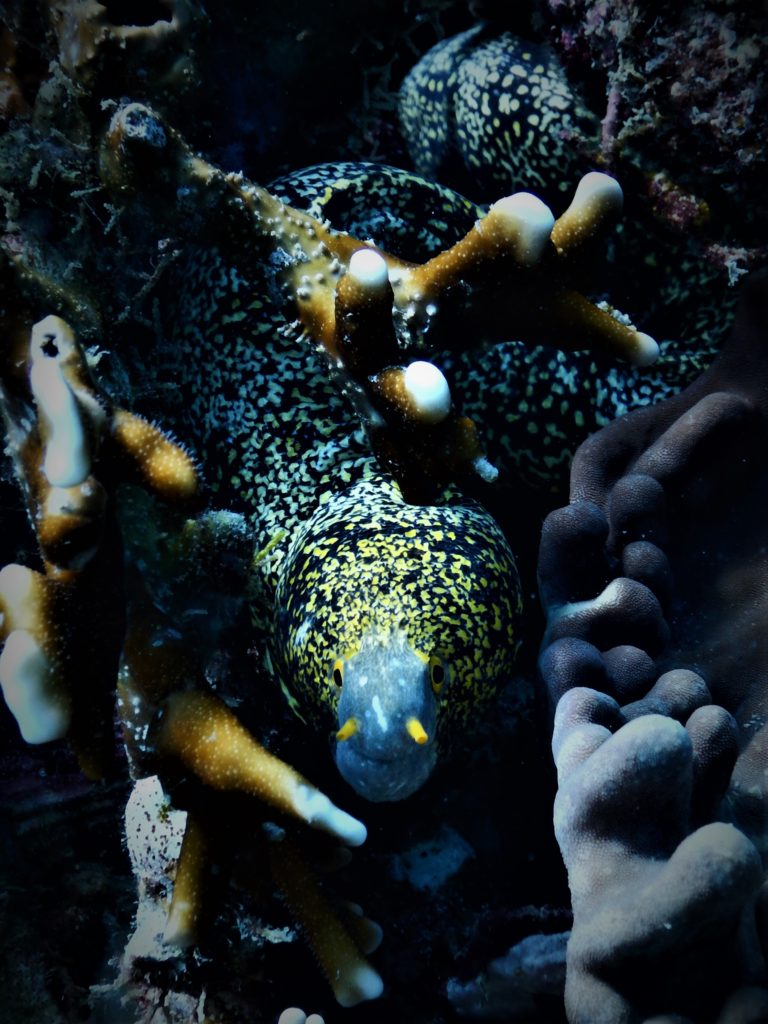
What Lies Beneath. Snowflake moray eel (Echidna nebulosa) hiding in fire coral and soft coral. Photo taken at 7m depth at Dakit dakit dive site off the east coast of Malapascua island, Philippines.
Lucy Harding is a PhD student in Dr Nick Payne’s lab.
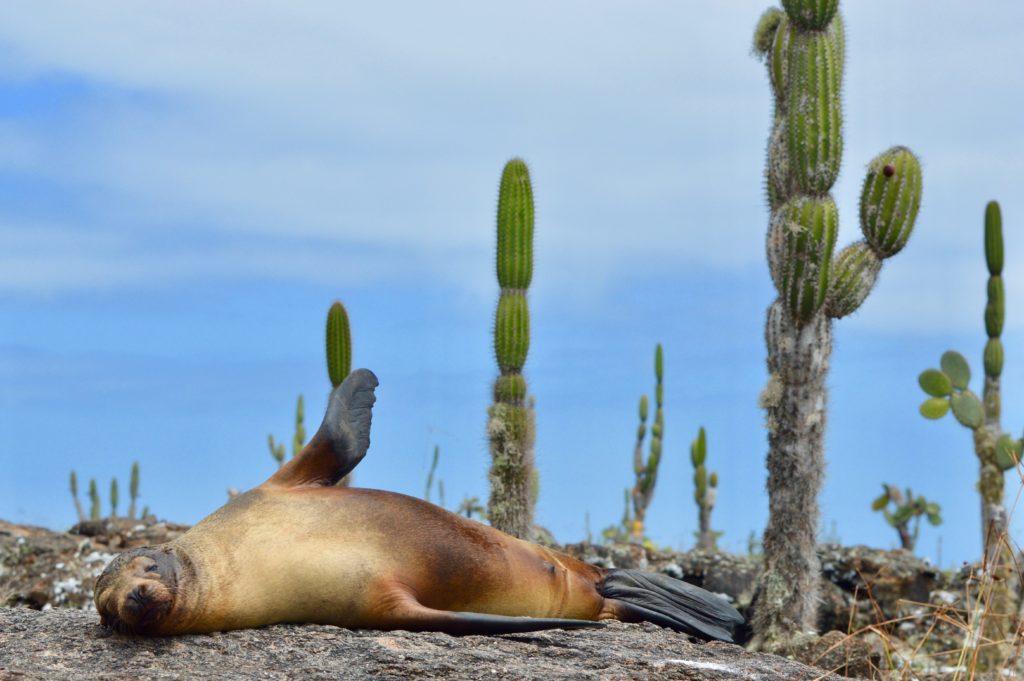
A sea lion rests amongst the cacti in the lava fields on Isabela Island in the Galapagos.
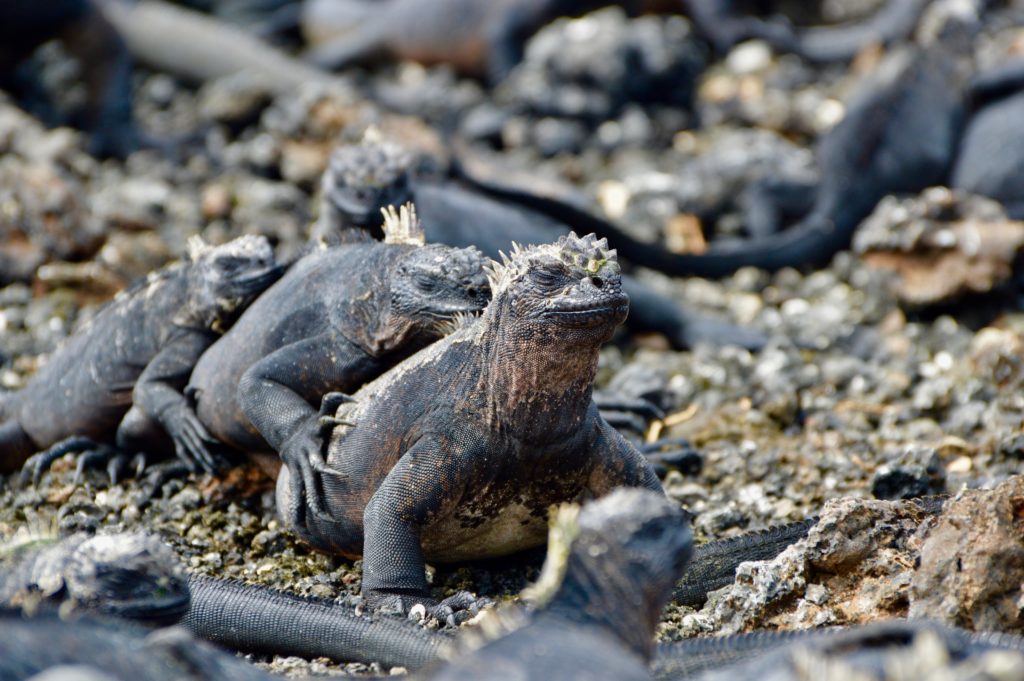
Marine iguanas drying off in the lava fields of Isabela Island in the Galapagos. These animals, endemic to the Galapagos, are the only marine lizard species in the world.
Floriane O’Keeffe is a PhD student in Dr Pepjin Luick’s lab. Her research focuses on the effects of warming and parasitism on aquatic invertebrates.
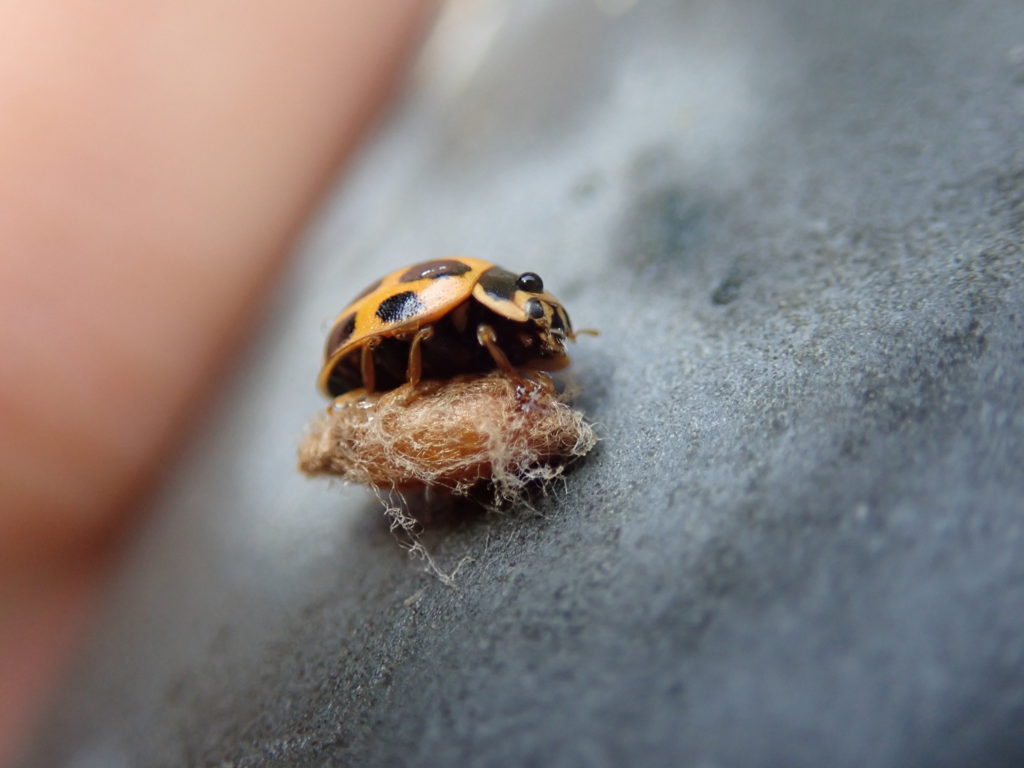
Dinocampus coccinellae is a parasitoid wasp that lays its eggs in ladybugs and other coccinellid beetles. When the larva emerges to pupate, it will ensnare the legs of the ladybug. At the same time, a virus paralyses the ladybug. Still twitching, the ladybug becomes a zombie bodyguard for the pupae against predators.
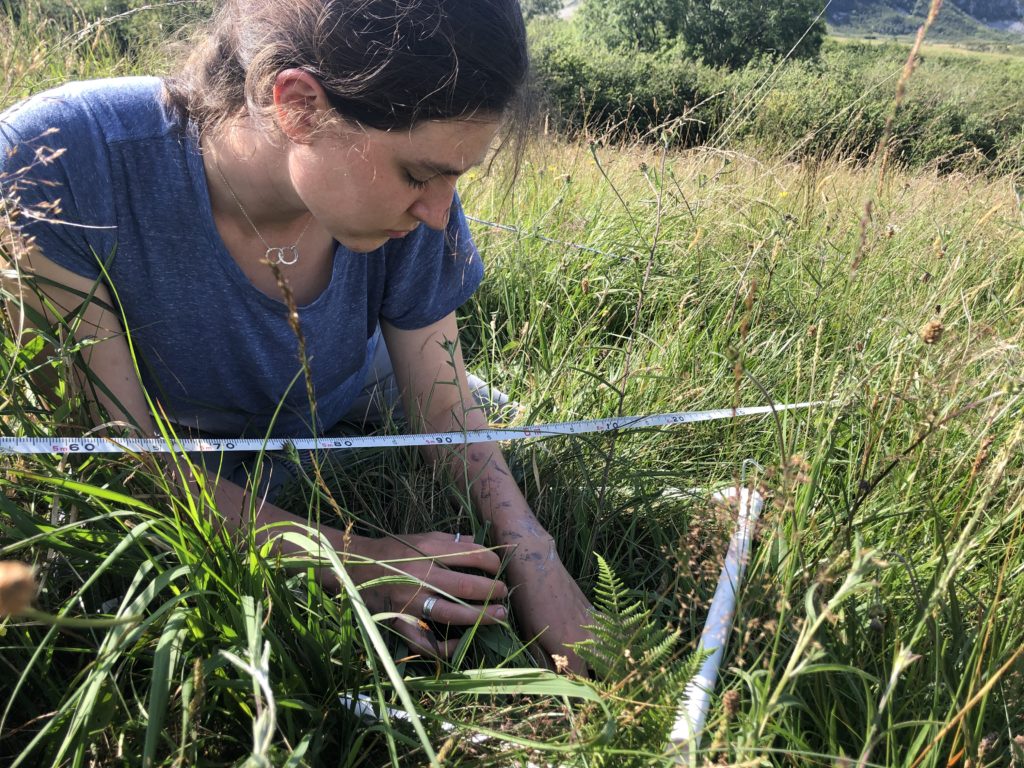
PhD student Caroline McKeon contemplating which weeds will inherit the Earth. Here she is looking for Plantago lanceolata in the Burren as part of her PhD.
Dr Jacinta Kong is a teaching and research Fellow in the Payne Lab. She is an environmental physiologist studying how animals live in and interact with their world.
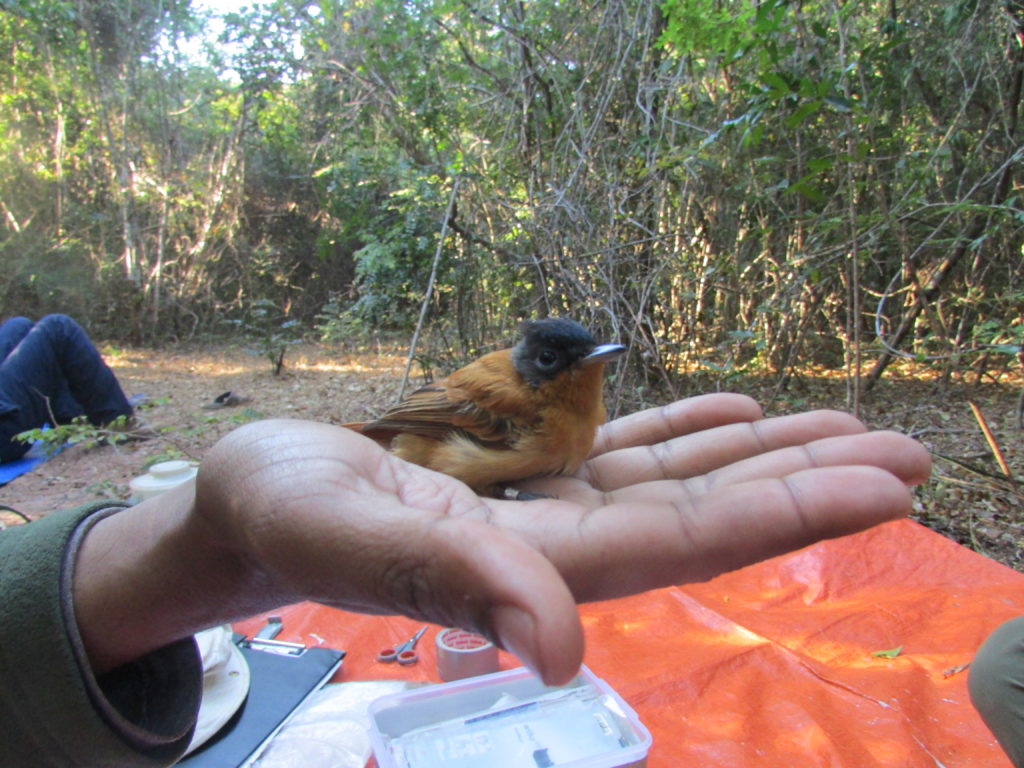
A Madagascar Paradise Flycatcher (Terpsiphone mutata) that has just been ringed for a study on the birds of Madagascar’s northwestern dry forests. These unique ecosystems are under threat, while much still remains unknown about their biodiversity.
Fionn Ó Marcaigh is a PhD student in the Marples Lab in the Department of Zoology, studying speciation and biogeography.
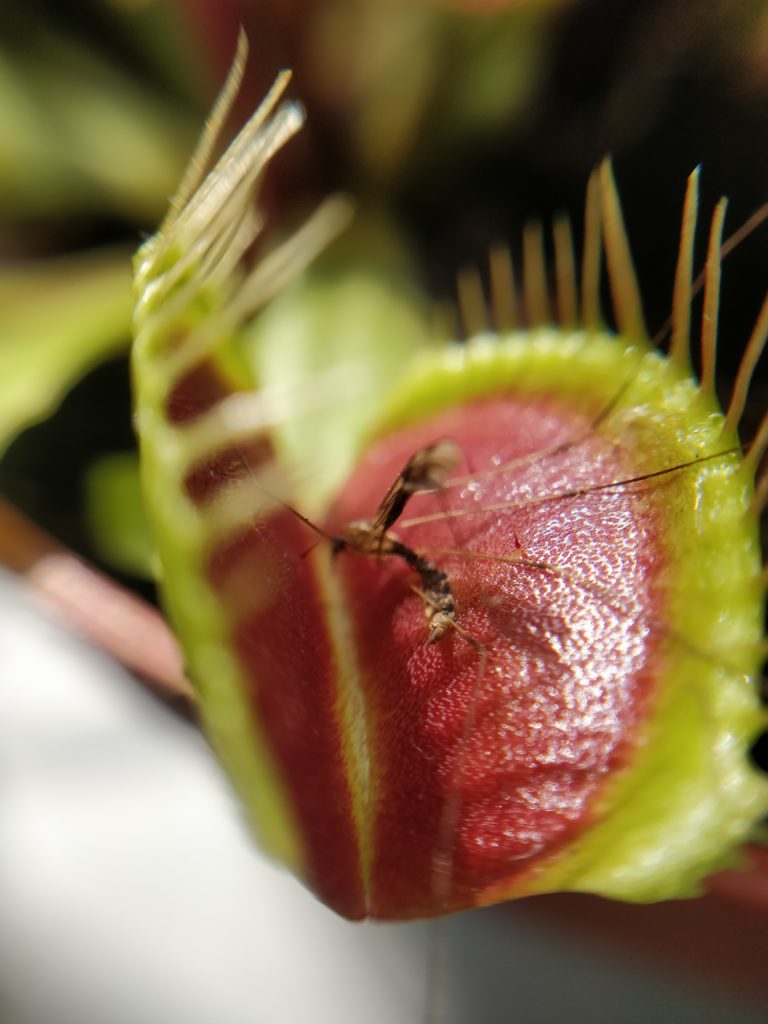
Trap Queen, the resident Dionea of Postgrad Office 2.4, bit off more than she could chew with this fly and had to reopen her trap with it dead but still sadly undigested inside.
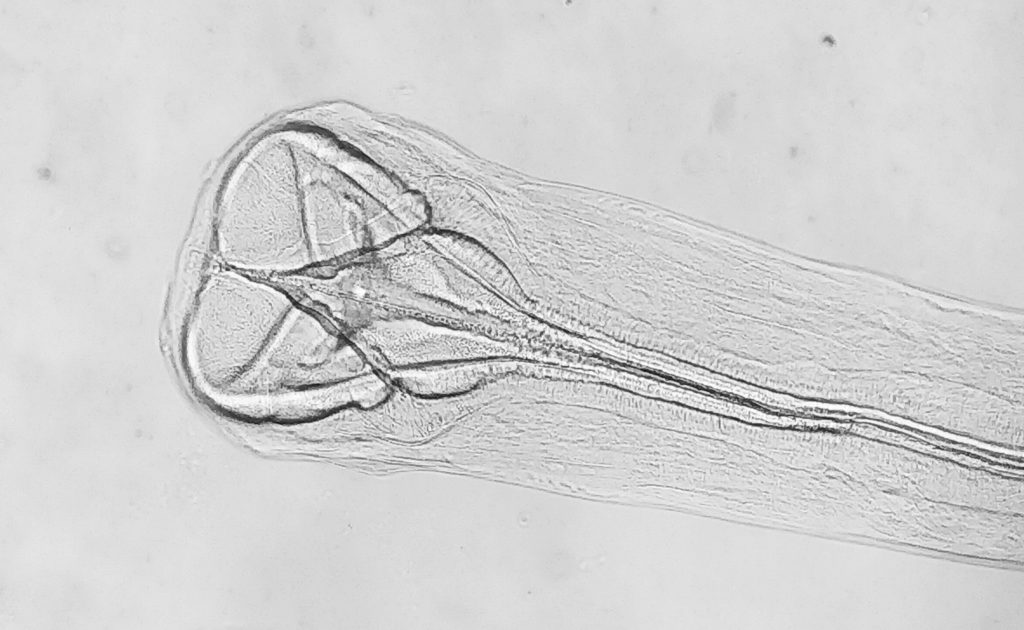
Tiny cuticularized plates form the mouth of Cucullanus parasitic nematodes. This worm lived in the pyloric stomach of a brown trout; its head is about the size of a grain of salt.
Paula Tierney is a parasite ecologist and a PhD student in the Holland Parasitology Lab. She studies how biological invasions affect helminth worm communities in native and invasive species using a freshwater fish model system. See more here and here on Twitter.
And now for our shortlisted photos:
The Green Micro Planet, where fungi and plants are close trading partners.
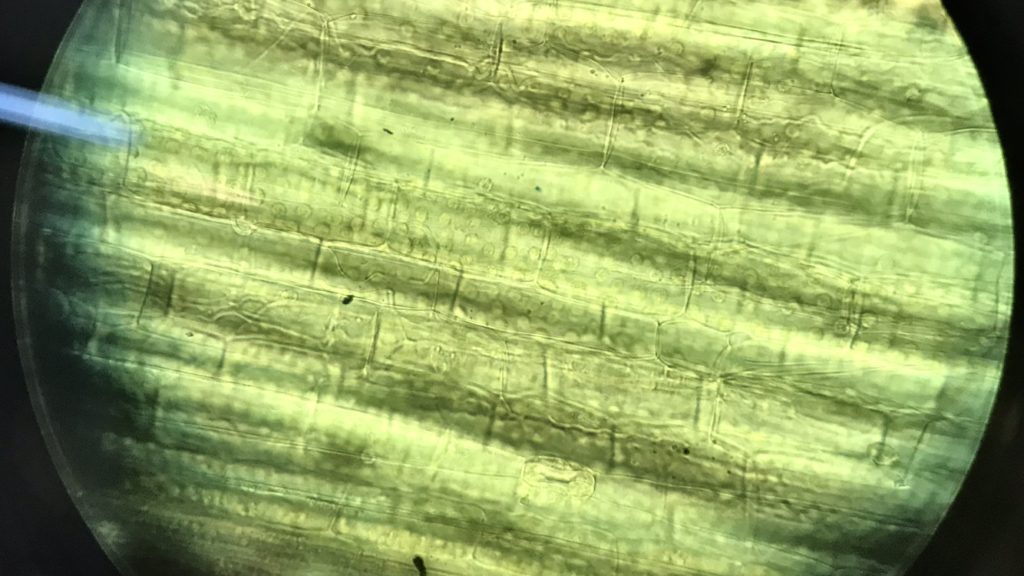
Evolution teaches microorganisms to adapt to many harsh conditions – from extremely cold to extremely hot temperatures, high salinity or the lack of nutrients, acid or alkaline soil. One of the many adaptation skills that microorganisms have developed is the ability to interact with live plants and to trade valuable goods between partners, as in a supermarket. In the picture shown here, transparent tubular structures are visible between the plants’ cells; these are the ‘arms’ of the fungus, alias hyphae, that are exchanging nutrients with the food industries of the plants’ cells, alias the chloroplasts. The interaction established is mutually beneficial and these fungi are named Endophytes (from the Latin words “endo” = inside, and “phyton” = plant)”.
Erika Soldi is a research assistant in the Botany Department.
Man and Nature.
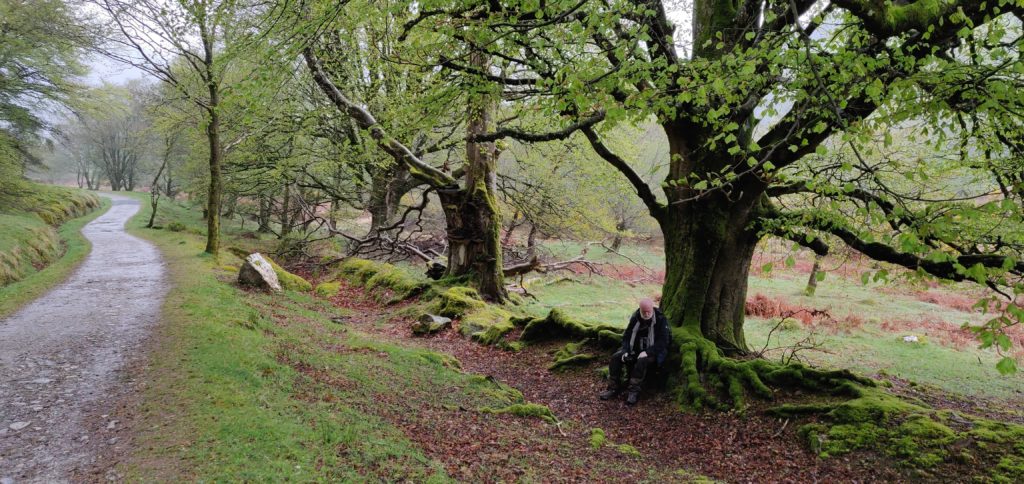
Dr John Rochford takes a break to contemplate nature on the Terrestrial Ecology field course 2019. The field course has taken place in Glendalough every year since 2007, having previously been held in the Burren and Killarney National Park. On this course, students learn from the best how to gather both data and inspiration from the plants and animals around them.
Fionn Ó Marcaigh is a PhD student in the Marples Lab in the Department of Zoology, studying speciation and biogeography.
Sea pink (Armeria maritima) and Sedum (Sedum anglicum) at Dursey Sound, Cork.
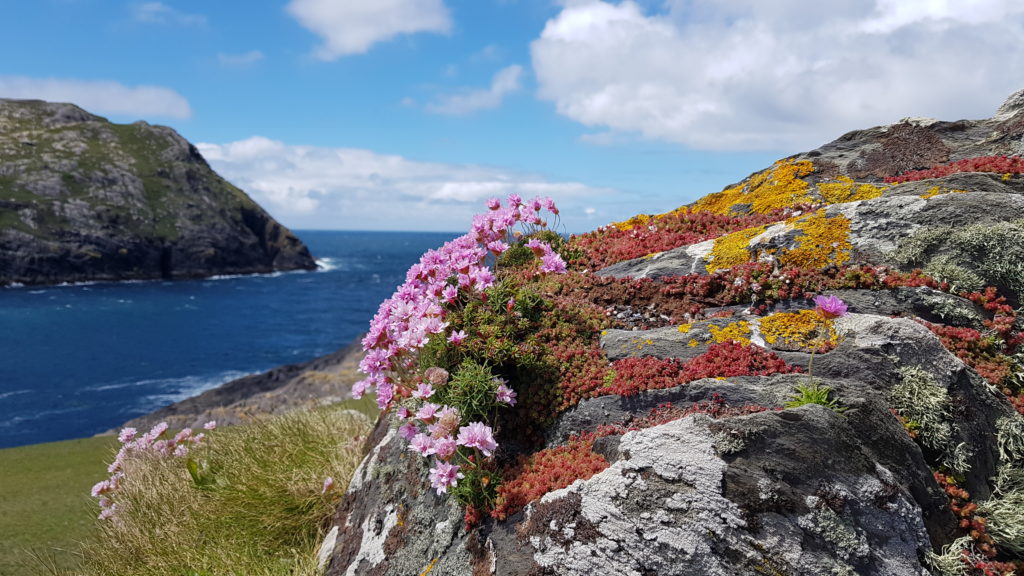
Dr Aoibheann Gaughrann is a postdoctoral researcher in the Behavioural and Evolutionary Ecology Research Group.
Agoraphobia.
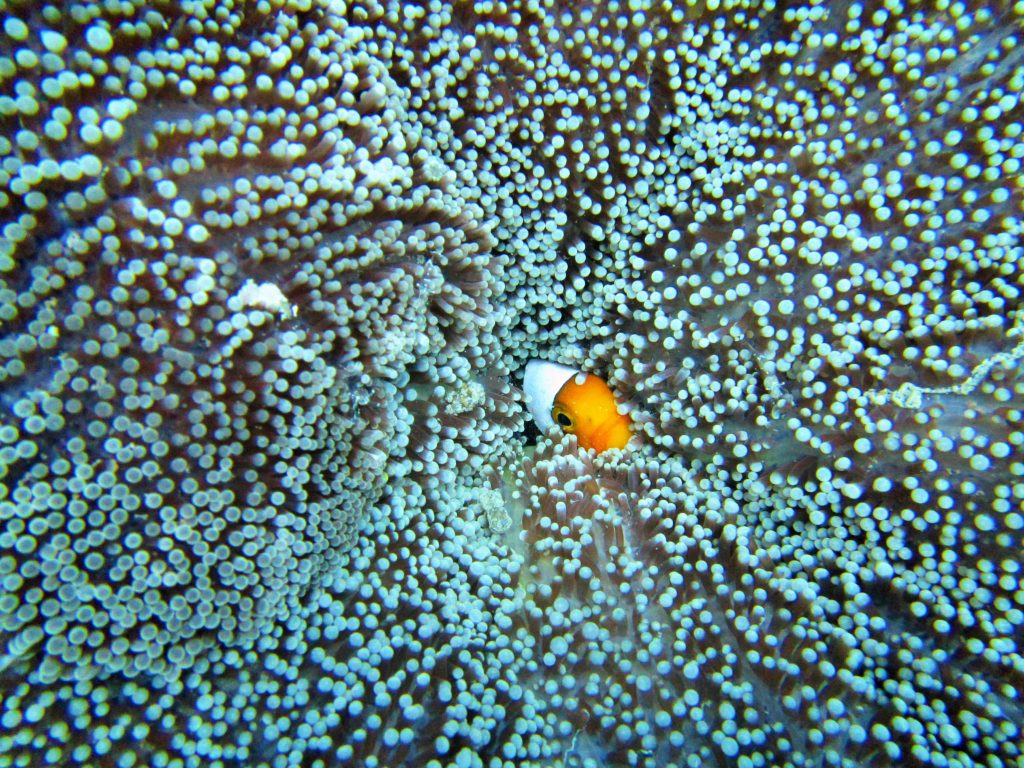
Clark’s anemonefish (Amphiprion clarkii) living inside a carpet sea anemone. Glass cleaner shrimp also visible living on the anemone. Photo taken at 12m depth at Batong bato dive site off the east coast of Malapascua island, Philippines.
Lucy Harding is a PhD student in Dr Nick Payne’s lab.
And the winner is…
Mirror mirror in the melted ice.
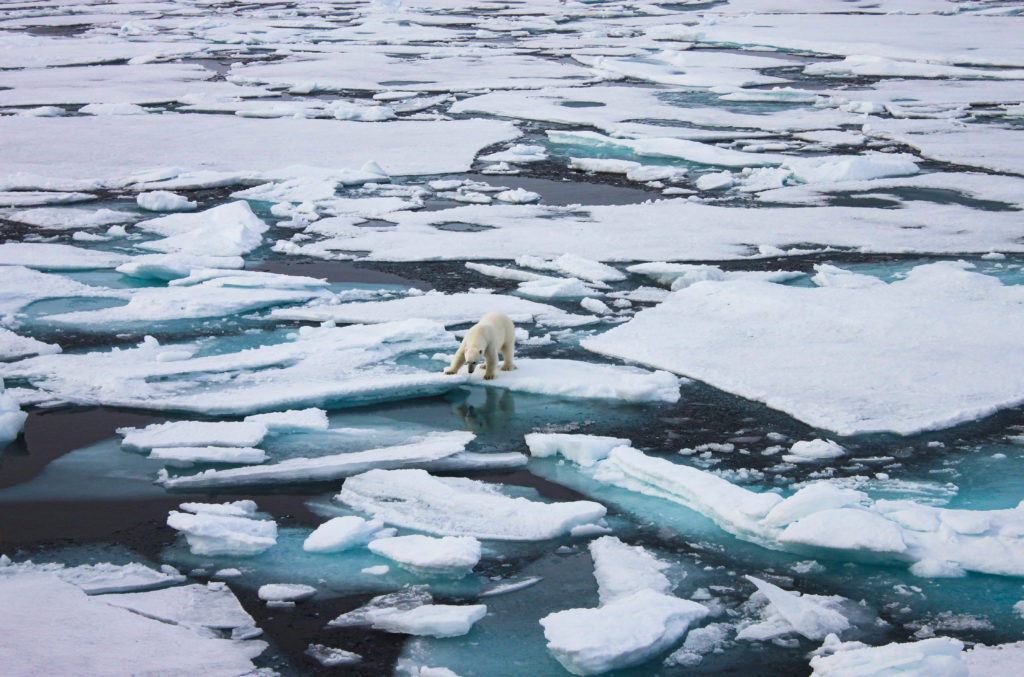
Back in 2015, as a research assistant on an expedition to the high Arctic, the team onboard had the pleasure of being visited by this beautiful and healthy female polar bear. She hung around the vessel for a couple of hours, intrigued by this giant metallic structure that had appeared in her home. I captured this moment by chance as she lowered her head to the water, seemingly looking at her reflection… It also acts as a reminder of the challenges and dangers these animals face because of our actions.
Jenny Bortoluzzi is a PhD student in Dr Andrew Jackson’s lab. She studies the spatial and foraging ecology of marine predators with a particular focus, and passion, for sharks and their relatives.
Thank you to all who participated and congratulations to our deserving winner!

